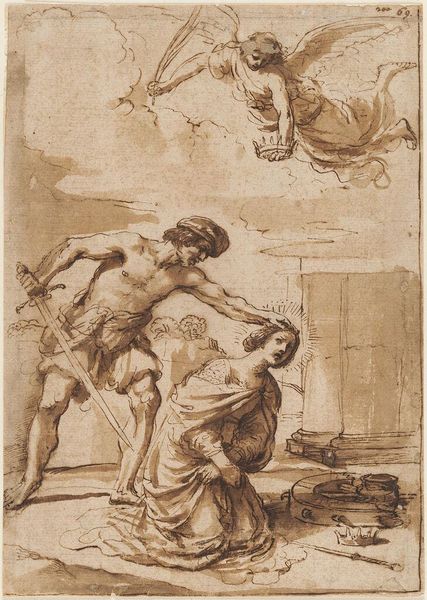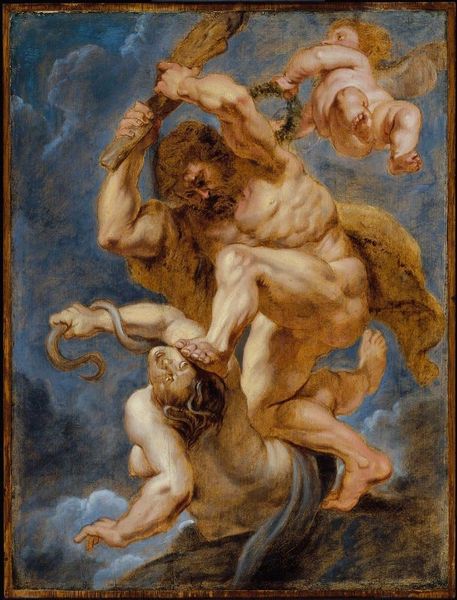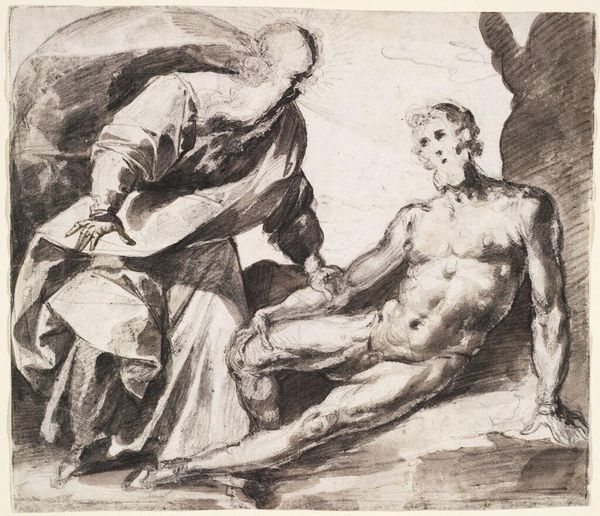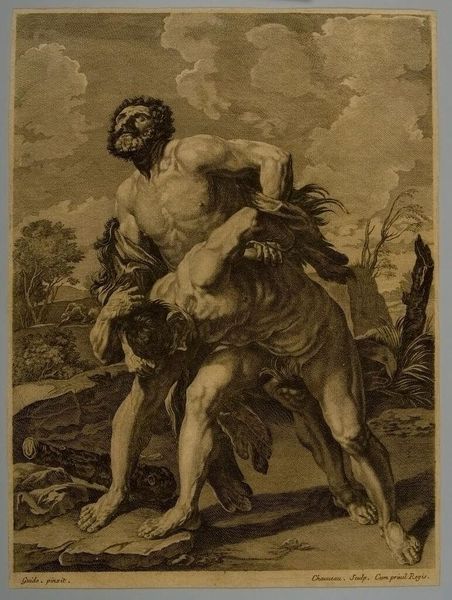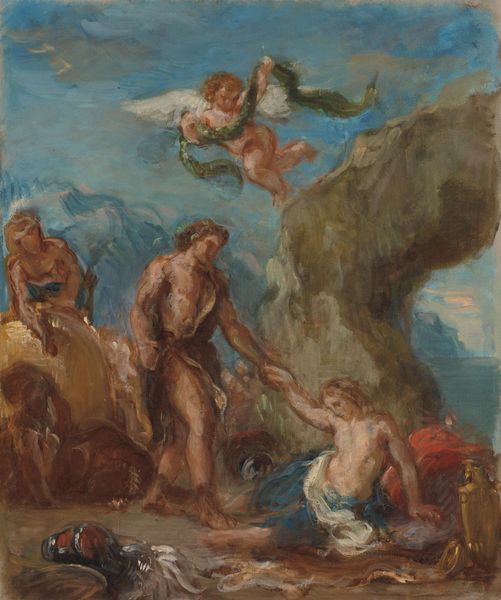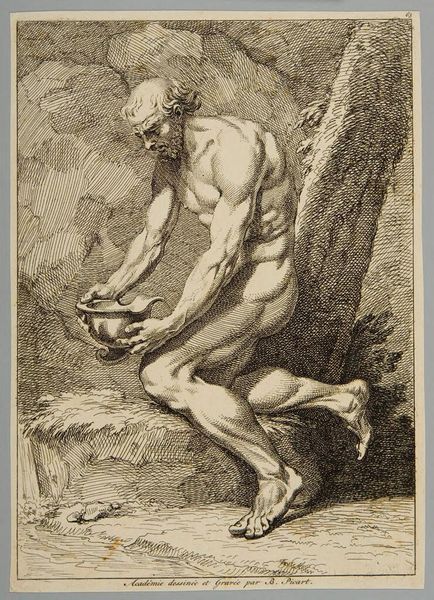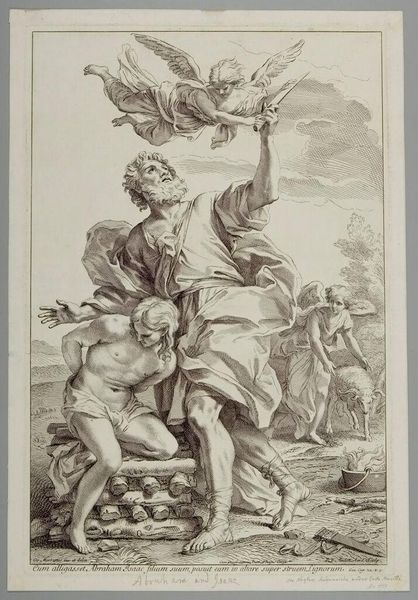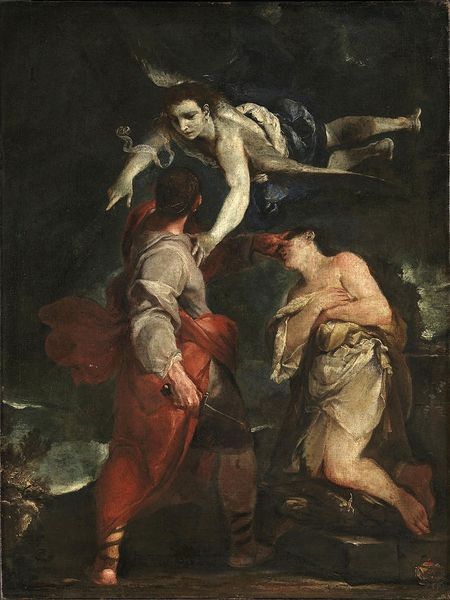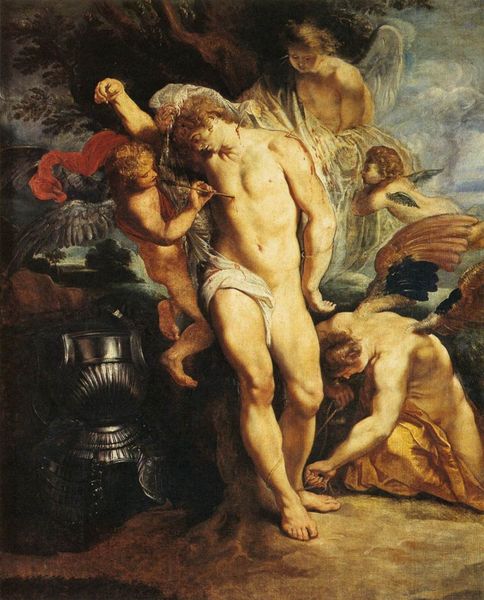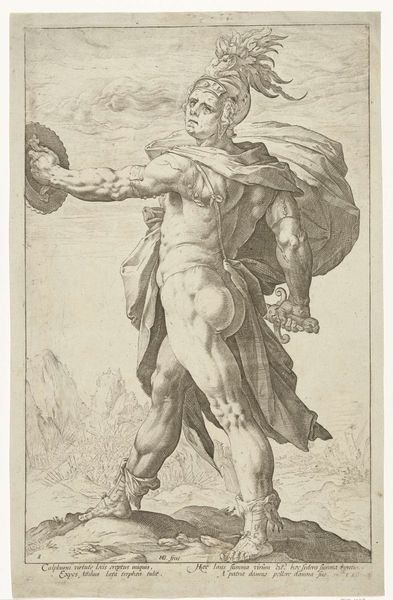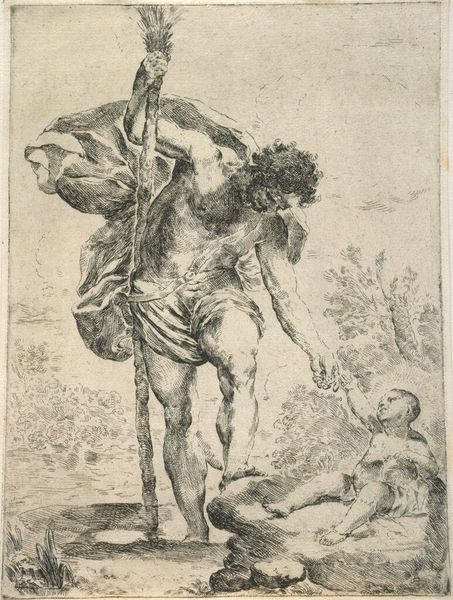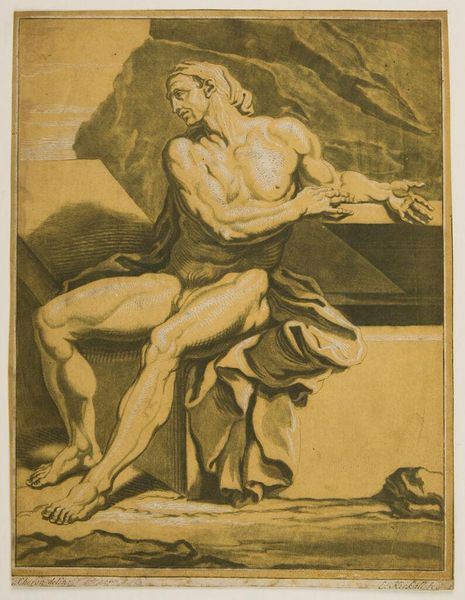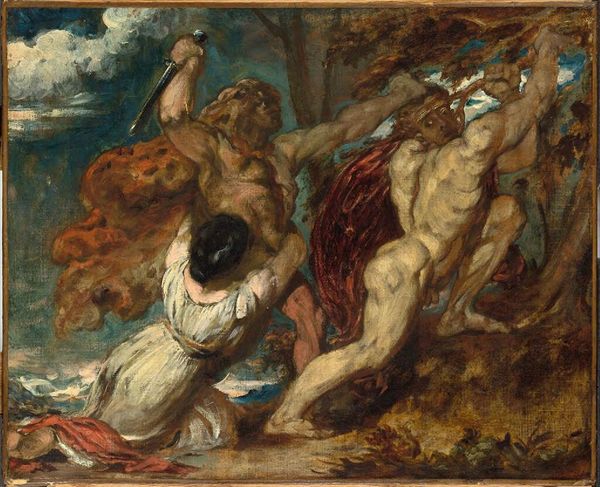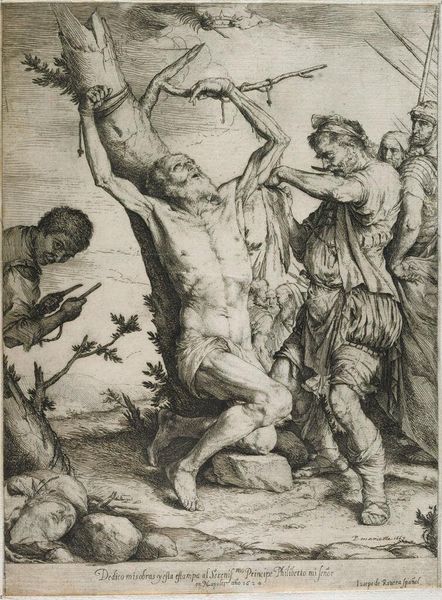
Mercury and a Sleeping Herdsman 1633
0:00
0:00
peterpaulrubens
Museum of Fine Arts (MFA), Boston, MA, US
oil-paint
#
allegory
#
baroque
#
oil-paint
#
figuration
#
oil painting
#
mythology
#
history-painting
#
nude
#
portrait art
Dimensions: 64 x 53 cm
Copyright: Public domain
Editor: This is "Mercury and a Sleeping Herdsman," painted by Peter Paul Rubens around 1633, using oil on canvas. I'm immediately drawn to the contrasting figures – one dynamic and the other seemingly lost in slumber. How do you approach interpreting a work like this? Curator: From a materialist perspective, let's consider the labor involved. Rubens wasn't just an artist; he ran a workshop. This painting reflects a highly organized production system, a commodity created in response to market demands of the wealthy elite. How might this impact the artistic intention? Editor: So, instead of seeing pure creative inspiration, you see... labor? I guess I hadn’t considered the "factory" aspect. Does this factory-production model diminish the value or meaning of the art in any way, especially the artist’s individual skill? Curator: Not diminish, but certainly reframe. The very substance, oil paint, links the painting to trade networks, pigment sourcing, and the labor of grinding and mixing. Rubens' mastery lies not only in composition and brushwork, but also in his adept navigation of the economic structures of 17th-century Europe, managing workshops to satisfy particular patronal needs, which has a social impact. Look closely, is the surface smooth and refined, or does it reveal the process of its making? Editor: There are some visible brushstrokes; it does feel somewhat immediate. The paint application is thicker in areas than others, and certain areas are rather undefined. Does that choice make a difference in the artwork’s cultural importance? Curator: Absolutely. The seemingly effortless quality conceals an intensive production system that ultimately caters to bourgeois modes of production. Do you consider the implications of this contrast and how the painting functioned as a commodity? Editor: This really shifts how I see it! I now appreciate Rubens’ technical mastery, not just as an individual skill, but also as indicative of a larger economic system and class structure operating around the artist. Curator: Precisely! Viewing it through this materialist lens allows us to understand its production and dissemination. Thank you, editor, for seeing what lies beneath!
Comments
No comments
Be the first to comment and join the conversation on the ultimate creative platform.
